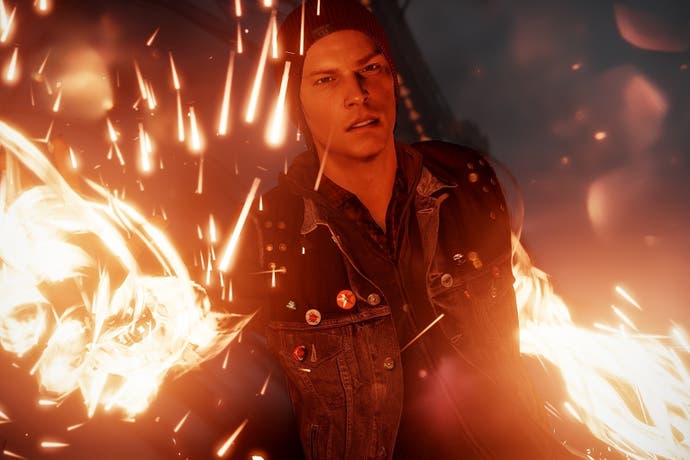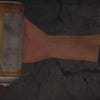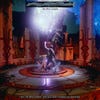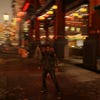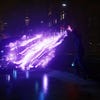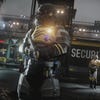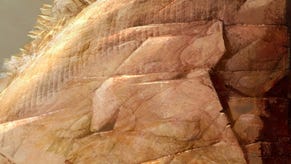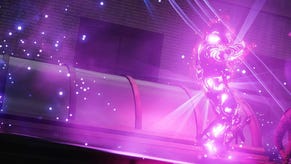Digital Foundry vs. inFamous: Second Son
Next-gen looks, last-gen thinking?
Last week's release of inFamous: Second Son kicked off a fascinating debate about the nature of next-gen gaming. How can a cutting-edge piece of software that breaks so many technological barriers fail to review as well as less advanced titles in the PS4 line-up? Our take on the situation is pretty straightforward: Sucker Punch has created a breathtaking sandbox that is worlds apart from its inFamous predecessors, but the fact that the gameplay hasn't moved on by anything like the same degree has created a curious disparity in the overall experience. It's a game where the lack of balance continually satisfies the senses but always leaves you hungry for something different, something more.
Flying around Seattle, unleashing a vast range of effects-driven superpowers, is spectacular entertainment in its own right, but we can't help but wonder if the world isn't being utilised to the fullest extent. Imagine a world of this size and detail being used as a delivery vehicle for something akin to The Last of Us or Metal Gear Solid. Open-world games of the past simply couldn't match the finesse and detail of such games due in part to a lack of resources. At last, we have an entire city at our disposal with more than enough detail to support any experience you could imagine. The power to deliver visuals of this calibre has existed for years on the PC, but it's only when developers are freed from the shackles of last-generation consoles that we can begin to see what the DX11-class hardware is truly capable of.
Gameplay-wise, inFamous: Second Son may well be based on a template defined by its predecessors, but the same clearly cannot be said for its visuals. In this respect Sucker Punch's PS4 debut is nothing short of a next-gen masterclass. The presentation is meticulously clean, almost pristine - operating with a full 1920x1080 framebuffer alongside a modified form of SMAA T2x that stands apart as the most impressive utilisation of post-process anti-aliasing we've seen on any platform. This high-quality solution combines MLAA with a temporal component delivering incredibly sharp and clean imagery with excellent edge coverage throughout. Ghosting artefacts associated with the temporal component are relatively minor and typically relegated to smaller floating objects such as blowing sheets of paper or birds. Image quality purists should also note that anisotropic filtering is fully present and accounted for - unlike a number of other recent PS4 releases.
"The power to deliver visuals of this calibre has existed for years on PC but freed from the shackles of last-gen console development, we can finally see what this tech can deliver."
As we noted in the initial performance analysis piece, Second Son utilises a physically-based renderer with a proper energy conservation model in play allowing light to interact with materials in a more natural and realistic way. Energy conservation plays an important role in a physically-based renderer in part by placing limits on the intensity of reflected light based on the value of the incoming light. The specular highlight of an object, for instance, cannot produce more light than the source light. The way sunlight reflects in pools of water or the way car headlights project into the world appear much more realistic than a more traditional model might offer. This approach to lighting combined with a heavy reliance on high-intensity spotlights are precisely what help create the sense of vibrancy present in the game.
Other elements contributing to the game's cohesive world include screen-space reflections along with a realistic portrayal of the wetness properties across surface materials. Puddles and other reflective materials utilise a mix of real-time screen-space reflections and cubemaps. Screen-space reflections have become popular as of late as they allow for almost unlimited reflectivity of surrounding objects without a significant performance hit. In an open-world game with objects and characters littered throughout the environment alongside complex world geometry, this is a godsend.
Unfortunately, there are limitations to this method, materialising when objects leave the viewport or are viewed at a steep angle. For instance, a bright neon sign adorning a building facade appears perfectly reflective until the sign itself leaves the player's point of view, where it no longer produces a reflection. It is for this reason that it appears Sucker Punch has implemented a more approximate cubemap solution alongside the screen-space implementation. These static approximations of surrounding elements combined with screen-space reflections help produce an overall convincing effect.
"Second Son delivers a visual presentation that belies its status as a first generation PS4 title - a remarkable achievement so early in the next-gen console's life-cycle."
Set in Seattle, Second Son is soaking wet for much of the time, so the reflective properties need to be handled in a realistic fashion in order to suspend disbelief. Puddles receive direct reflections, of course, but less reflective surfaces, such as the side of a building, see realistic results as well. Sunlight, ambient light and spotlights all play off of these surfaces to realistic effect. To ensure a high level of quality, Sucker Punch opted not to utilise a full real-time lighting system that tracks the time of day - instead the team concentrated on lighting the city across eight different set times, with the game switching between them according to the story or the mission.
Perhaps the most striking visual feature of Second Son stems from its advanced particle system. The engine appears capable of throwing around tens of thousands of individually lit particles at any one time - indeed, Delsin regularly breaks down into thousands of individual particles while tens of thousands of raindrops populate the same scene. In addition, alpha effects are rendered at full resolution and in large volume complete with full shadowing - typically a very demanding effect. The combination of these elements helps produce some of the most detailed effects work seen in any console video game to date. What's incredible about this engine is that aside from some of the more stressful situations, the frame-rate typically remains above 30fps. The fact that the player so freely creates destruction without a severe performance penalty improves the overall game flow and feels empowering coming off of last-generation machines.
Another interesting note, Delsin's character model consists of more than 60,000 triangles with 7500 specifically used for his beanie. (To put that into perspective, Alyx Vance from Half-Life 2 used just over 8000 triangles for her entire model. That's one detailed beanie.) As an open-world game we also see a large number of pedestrians, DUP soldiers and vehicles populating the screen. The sheer amount of geometry being rendered at any single time is quite impressive. Texture quality is also of extremely high quality with signs, billboards and surface textures alike all exhibiting extremely sharp, high-resolution textures throughout without any evidence of texture streaming issues.
"Performance capture in the new game is a huge leap over the previous inFamous titles, but the quality of the story-telling doesn't quite match the beauty of the tech."
That's not to suggest that there aren't still limitations, however. A level-of-detail system is in place for distant structures and objects that can result in abrupt pop-in from time to time. These lower-quality models also utilise lower-quality textures. Another issue we noted is the appearance of larger bodies of water which appear strangely simplistic and out of place within such a complex simulation. Following the incredible ocean simulation witnessed in Assassin's Creed 4 and in contrast to the rest of the game, the water seems somewhat outdated.
As we noted in the performance analysis, the choice to ship with an unlocked frame-rate has a rather negative impact on the game. While performance generally manages to stay north of 30fps, the resultant judder compromises the fluidity of the visuals and produces inconsistent controller response. With Second Son averaging around 35fps, the player receives little additional benefit as a result of this choice. By limiting the frame-rate to 30fps they could have delivered an open world game with a very consistent frame-rate and controller response. Instead we're left to endure a near-constant judder and unstable performance throughout.
Furthermore, for users interested in utilising Remote Play on their PlayStation Vita, the unlocked frame-rate creates frame-ordering problems and more pronounced judder resulting in a markedly poor experience. Again, we can't help but feel that a 30fps cap could perhaps produce better results - Killzone Shadow Fall's recently added frame-rate cap produces a completely consistent experience by comparison. Removing the cap, however, results in the same poor performance we encountered with Second Son. We can only hope the team at Sucker Punch sees fit to implement a limiter in the future as Guerrilla did with its PS4 debut.
" While performance generally manages to stay north of 30fps, the resultant judder compromises the fluidity of the visuals and produces inconsistent controller response."
InFamous: Second Son - the Digital Foundry verdict
Creating a new entry in an established franchise is always a difficult proposition - especially when dealing with a new console. Sucker Punch certainly does a good job of nailing the basics here but while Second Son's list of technical accomplishments may be a mile long, the game itself almost feels like it could be summed up in a single paragraph. The massive leap in visual fidelity winds up contrasting against the familiar game design, ultimately leading to a feeling of mild disappointment and a sense that the game only partly delivers on the next-gen dream. After all, when you have access to such a remarkably detailed world and a huge arsenal of superpowers, somehow the act of collecting a hundred shards or finding hidden cameras feels a bit underwhelming. Even the notion of integrating elements of this phenomenal technology more directly into the gameplay could have transformed the experience. In this respect we're reminded a little of Alan Wake - an Xbox 360 game that effectively weaponised light and shadow, opening up a wealth of of new gameplay potential, only to waste it on a simple point and shoot mechanic.
As a result, it's the visual impact of the technology behind Second Son that steals the show as opposed to its applications during gameplay. This allows the game to shine more brilliantly than it may have otherwise, but beyond that we're left with just the promise of better things to come. Open-world games have become increasingly popular over the course of the last decade, but it had become clear that many games were simply being limited by outdated hardware. Second Son deftly illustrates the benefits of moving to a new console platform by eliminating so many of the problems that have plagued the genre on older consoles. With such a solid foundation to build from, the potential for new inFamous sequel is mouthwatering.
While Second Son doesn't hit every mark, we can't ignore the fact that Sucker Punch was able to deliver such a polished, technically accomplished title so early in the life cycle of PlayStation 4. Even with its faults, it feels like the type of game one might expect only after a solid year or two as opposed to just a few months into the system's lifecycle. Such an effort certainly reserves a spot for Sucker Punch around the table of upper tier of internal studios and with the bar set so high so early, we can't wait to see what Sony's Worldwide Studios come up with next.
